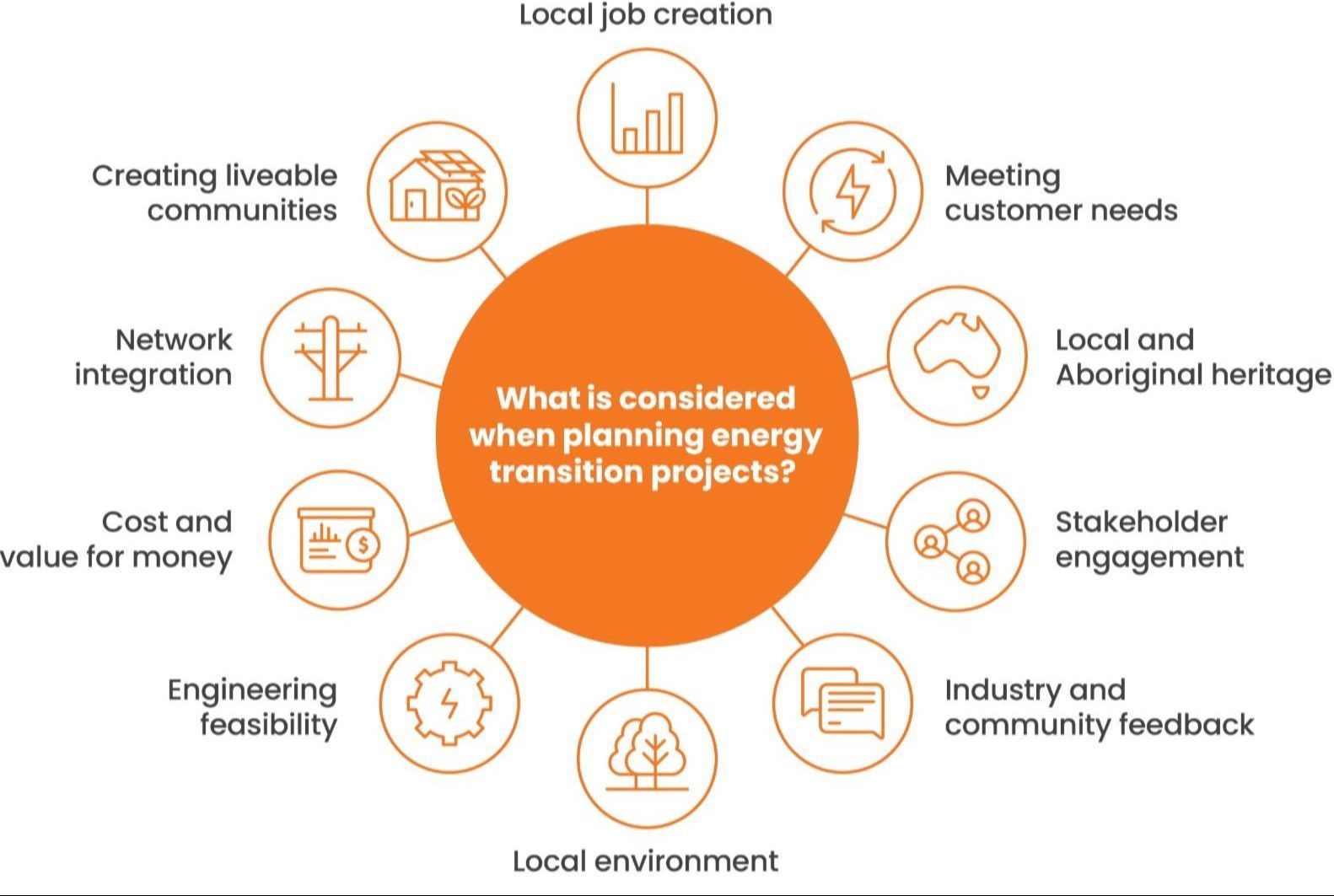FAQs and community resources
Use the drop-down boxes below to explore questions by topic and quickly find the information you're looking for.
Frequently asked questions
Transmission refers to network infrastructure that carries very large amounts of energy from generation sources to substations where it is then transferred to the distribution network and then delivered to residential and business properties.
A transmission line easement is a property right that enables our employees and contractors to enter land to undertake maintenance and other work on transmission lines and other associated electricity assets. To protect this property right the easement places limitations on certain land uses and activities over the land that could pose a safety risk to the community to environment or impact the safe operation of the Western Power network.
Common examples of easements include poles or wires on private land and shared driveways. You can find more information on landowner obligations here.
While we prioritise using existing infrastructure where possible, upgrades alone aren’t always feasible. During planning, we consider future electricity needs, community and industry demand, technical requirements, cost and operational needs. We undertake a rigorous assessment to balance these factors and ensure the best option for the community.
The result is a combination of new construction and targeted upgrades to existing assets.
Electric and Magnetic Fields (EMF) are carefully considered in the planning, location and operation of Western Power network assets. We are guided by Australian and international health authorities and take a precautionary approach in line with the Energy Network Australia EMF Management Handbook. This includes applying industry best practice methods to our engineering and design solutions to reduce or mitigate EMF exposure.
You can find information on Electric Fields and Magnetic Fields and their occurrence on the Australian Radiation Protection and Nuclear Safety Agency (ARPANSA) website.
More renewable energy sources are required to meet growing community and industry demand. The most abundant renewable resources such as wind are often located outside the metro area in our regions. To transport clean energy from these regions requires essential upgrades to the existing network as well as building new connecting infrastructure. This will ensure the network continues to meet growing energy needs while remaining robust and reliable.
For more information please visit Energy Policy WA
Click the diagram below to see Western Power's key considerations when planning a new energy transition project.






